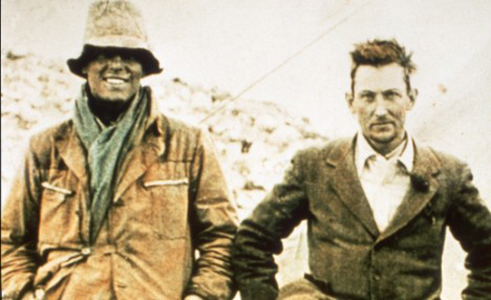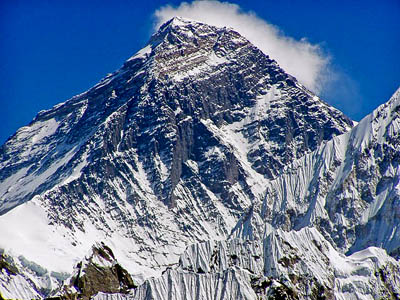A group of climbers is planning to retrieve the bodies of some of the mountaineers who have died on the world’s highest mountain.
The Extreme Everest Expedition 2010 hopes to bring some of the frozen bodies from the higher reaches of Everest, where they have lain – some of them for years. The team also hopes to clear two tons of rubbish from the ‘death zone’ above 8,000m, some of it dating from the earliest sorties up the mountain.
The 31 members will be led by Namgyal Sherpa in the first attempt at clearing debris from such a high altitude, where the human body can only exist for short periods due to the oxygen-sparse atmosphere and extreme climatic conditions.
The amount of waste on the mountain has increased since the popularity of ascents increased, with up to 500 people successfully summiting each year, many on commercially led expeditions.
A statement by the Extreme Everest Expedition organisers said: “No one has successfully been able to manage this pile of waste materials left above the height of 8,000m, although some attempts have been made to manage this waste in past years.”
But it is the recovery of dead mountaineers that will attract most attention. The operation will concentrate on the route above the South Col, and hopes to recover the remains of five climbers, including a Swiss mountaineer who died in 2008 on the mountain. The team hopes to cremate the body – with the family’s permission – below base camp.
Fifteen people died on Everest in one single climbing season in 1996 – the deadliest in the mountain’s history. The death of David Sharp in 2006, reportedly passed by several climbers in his final hours, sparked a huge debate on mountain ethics.

George Mallory, right, and Andrew 'Sandy' Irvine. Their bodies are still on Everest
It is estimated about 150 climbers’ bodies may lie on the mountain, including that of George Mallory, who died along with his climbing partner Sandy Irvine in 1924. Mallory’s body was found by an expedition set up specifically to find the pair in 1999, and his body was reburied at the site it was found on the north face of the mountain.
The Extreme Everest Expedition 2010 is due to start on 25 April and is expected to last 40 days.

icemonkey
10 May 2011my opinion is that the familys want thier loved ones disturbed than do it but in my opinion the should be left alone,you have to remember that its just a shell .but to remove them from immediate routs is a good idea to. but all the power to you to think of peoples loved ones.as long as you do it out of the kindness of your heart(in other words free of charge which i hope is the protocall!!!!!!!!!! i wish i could assist in the recovery efforts , since im out of work i'd love to help free of charge
Niall
27 May 2011I endorse icemonkey's opinion on recovery. It should be done with the consent of family, and be done for safety, and done safely.
That said, I do believe there are too many people, as climbing tourists, going to Everest who have the money to pay for the very expensive trip, but who don't the physical capability to succeed or in the saddest cases to survive.
I think there should be a mandatory stringent fitness requirement before anyone is allowed on Everest and other high mountains, in the same way that astronauts must prove their capabilities.